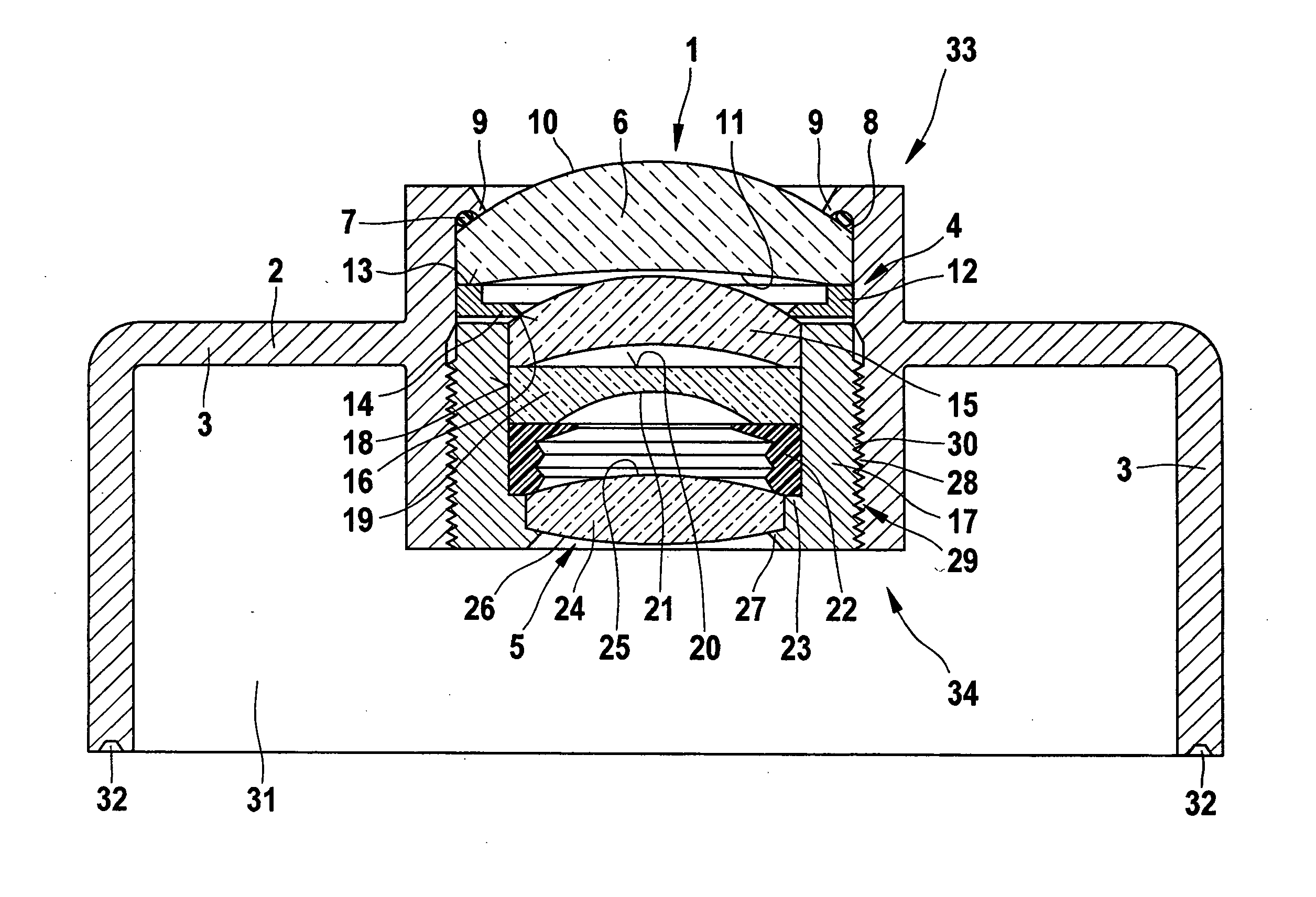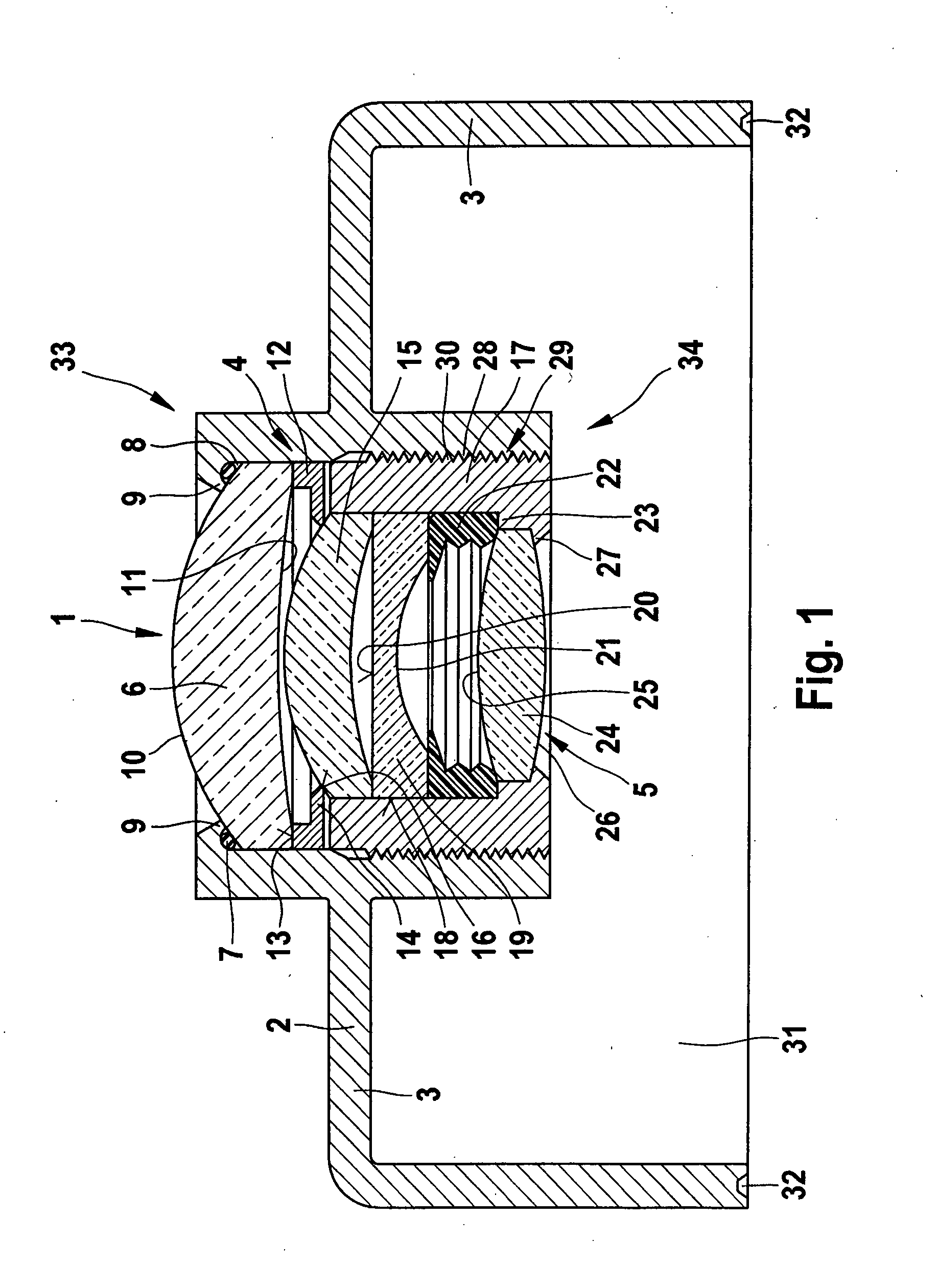Lens Stack, Mounted in a Gas-Tight Manner, for a Camera Housing
a technology of lens stack and camera housing, which is applied in the field of camera modules, can solve the problems of dew formation in the optical path, degradation of image quality, and high mechanical stress on the camera module used in motor vehicle operation, and achieve the effect of shortening the tolerance chain and reducing the number of components
- Summary
- Abstract
- Description
- Claims
- Application Information
AI Technical Summary
Benefits of technology
Problems solved by technology
Method used
Image
Examples
Embodiment Construction
[0015]A front housing shell 3 of a camera suitable for use in motor vehicles is shown in the illustration according to FIG. 1. Front housing shell 3 of a housing 2 includes an objective lens mount 4 to accommodate a lens stack 5 that encompasses a plurality of lenses. Lens stack 5 forms an objective lens 1 of the camera suitable for use in motor vehicles.
[0016]Lens stack 5 includes an outer lens 6, which is sealed from front housing shell 3 with the aid of a sealing ring 7. To this end, front housing shell 3 has a recess 8 for sealing ring 7. Recess 8 for sealing ring 7 is formed in front housing shell 3 in such a way that gripping edges 9 grasp sealing ring 7, gripping edges 9 at the same time forming a bearing surface for outer lens 6. On its side pointing toward the outside, it is provided with a convex curvature 10 and, on its side pointing toward the interior of front housing shell 3, it is provided with a concave curvature 11. Outer lens 6 is resting on an annular spacer 12, w...
PUM
| Property | Measurement | Unit |
|---|---|---|
| length | aaaaa | aaaaa |
| flexible | aaaaa | aaaaa |
| mechanical stresses | aaaaa | aaaaa |
Abstract
Description
Claims
Application Information
 Login to View More
Login to View More - R&D
- Intellectual Property
- Life Sciences
- Materials
- Tech Scout
- Unparalleled Data Quality
- Higher Quality Content
- 60% Fewer Hallucinations
Browse by: Latest US Patents, China's latest patents, Technical Efficacy Thesaurus, Application Domain, Technology Topic, Popular Technical Reports.
© 2025 PatSnap. All rights reserved.Legal|Privacy policy|Modern Slavery Act Transparency Statement|Sitemap|About US| Contact US: help@patsnap.com


